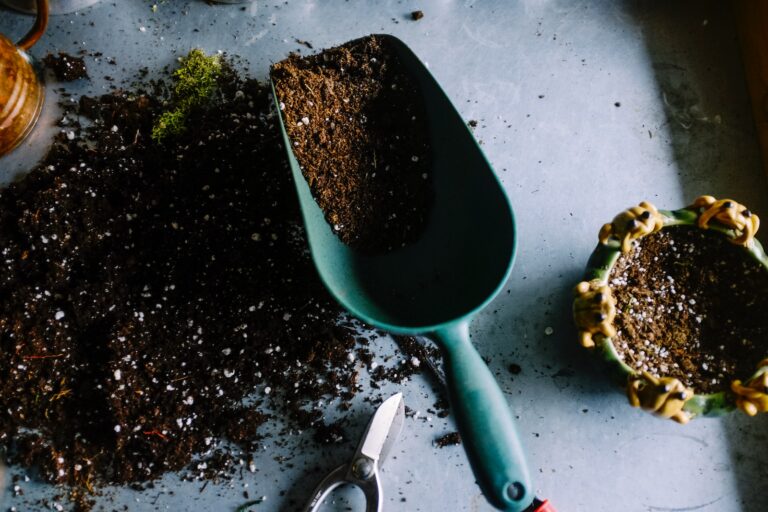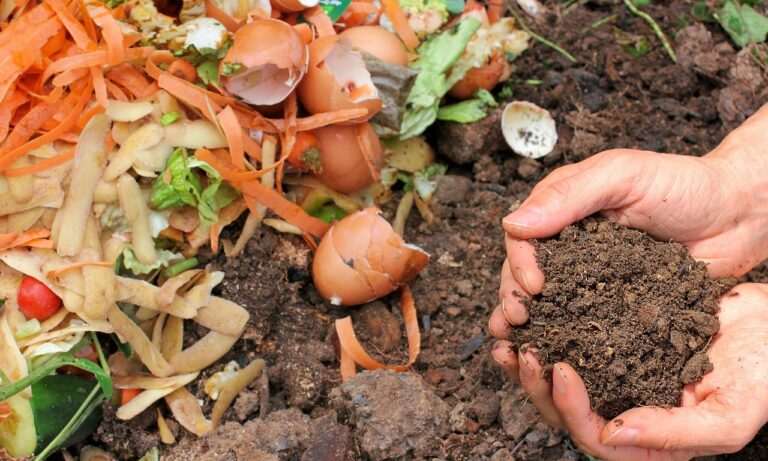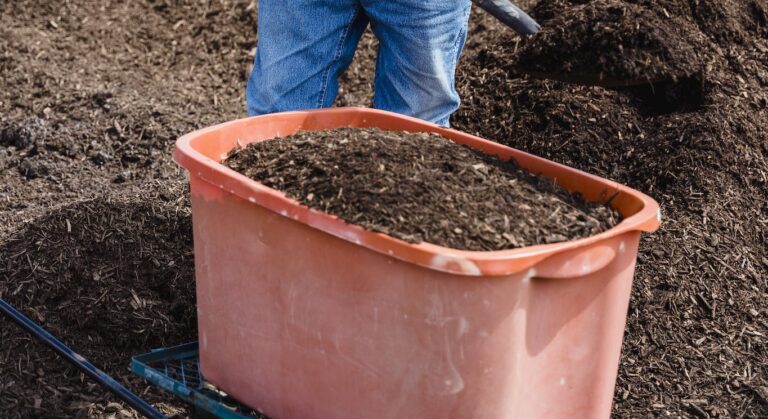I know what you might be thinking – why bother composting my garden in the fall? Well, let me tell you, the benefits of fall composting are not to be underestimated.
With the arrival of cooler temperatures and the abundance of fallen leaves, autumn provides the perfect opportunity to replenish your soil and prepare it for the next growing season.
But that’s not all, there are some best practices to keep in mind, as well as common concerns to address.
So, stick around, because I’m about to reveal some valuable tips on how to maintain a healthy compost pile during the colder months and how to use that fall compost to enhance the quality of your garden’s soil.
Benefits of Fall Composting
There are several significant benefits to fall composting that make it a worthwhile practice for any gardener.
Fall composting techniques, especially composting with autumn leaves, offer numerous advantages for your garden’s health and productivity.
When it comes to fall composting techniques, incorporating autumn leaves into your compost pile is a game-changer. As the leaves decompose, they provide a rich source of carbon, which helps balance the nitrogen-rich materials in your compost. This balance is crucial for the breakdown of organic matter and the production of nutrient-rich compost.
Composting with autumn leaves also helps reduce waste. Instead of disposing of those piles of leaves that accumulate in your yard, you can turn them into valuable compost. By diverting these organic materials from landfills, you contribute to a more sustainable and eco-friendly gardening practice.
Furthermore, fall composting helps prepare your garden for the upcoming growing season. As you add compost to your soil in the fall, it enriches the soil with essential nutrients and improves its structure. This, in turn, promotes healthier root growth, increases water retention, and enhances overall plant vigor.
Best Practices for Composting in Autumn
To ensure optimal results when composting in autumn, it’s important to follow best practices that will maximize the breakdown of organic matter and the production of nutrient-rich compost. Fall composting techniques are slightly different from composting during other seasons due to the colder temperatures and the slower decomposition process. Here are some key tips to help you compost effectively in colder climates during autumn.
Firstly, it’s important to maintain the right balance of green and brown materials in your compost pile. Green materials, such as grass clippings and food scraps, provide nitrogen, while brown materials, such as leaves and branches, provide carbon. Aim for a ratio of roughly three parts brown to one part green to ensure proper decomposition.
Secondly, consider insulating your compost pile to retain heat. You can use a tarp or straw to cover the pile and keep it warm. This will speed up the decomposition process and help maintain a consistent temperature.
Additionally, it’s crucial to regularly turn your compost pile. This helps to aerate the materials and distribute heat evenly, encouraging decomposition. Aim to turn your pile at least once a month.
Lastly, keep your compost pile moist but not overly wet. Watering the pile occasionally will help maintain the right moisture level for decomposition.
Common Concerns About Composting in the Fall
One common concern that arises when composting in the fall is how to prevent the compost pile from becoming too wet. This is a valid concern, as excessive moisture in the compost pile can lead to a lack of oxygen, which can slow down the decomposition process and create an unpleasant smell. To address this issue, it’s important to find the right balance of moisture in the compost pile.
One way to prevent the compost pile from becoming too wet is to use a compost bin or container with good drainage. This allows excess moisture to drain out, ensuring proper aeration and preventing waterlogged conditions. Additionally, it’s important to avoid overwatering the compost pile, especially during periods of heavy rainfall. If the pile does become too wet, you can add dry materials such as leaves, straw, or sawdust to absorb the excess moisture.
Another concern when composting in the fall is the potential for the compost pile to cool down too much due to the colder temperatures. This can slow down the decomposition process and prolong the time it takes for the compost to be ready for use. To overcome this challenge, it’s recommended to insulate the compost pile by covering it with a tarp or straw to retain heat. You can also consider using a compost bin with insulation properties to help maintain a steady temperature.
Tips for Maintaining a Healthy Compost Pile During the Colder Months
Maintaining a healthy compost pile during the colder months requires careful attention to temperature regulation and the addition of appropriate materials. Winter composting can be challenging, but with the right strategies, you can ensure that your compost pile remains active and productive even in cold weather.
Here are three crucial tips to help you maintain a healthy compost pile during the colder months:
- Insulate your compost pile: As temperatures drop, it’s essential to insulate your compost pile to keep it warm. Use materials like straw, hay, or leaves to provide insulation. These materials create a barrier that helps retain heat and prevents the compost pile from freezing.
- Monitor moisture levels: During the winter, it’s crucial to maintain proper moisture levels in your compost pile. Too much moisture can lead to anaerobic conditions, while too little moisture can slow down decomposition. Aim for a moisture level of around 40-60% by adding water or dry materials as needed.
- Add nitrogen-rich materials: In cold weather, the decomposition process slows down, and the compost pile may need an extra boost of nitrogen. Add nitrogen-rich materials like coffee grounds, vegetable scraps, or grass clippings to provide the necessary nutrients for microbial activity and decomposition.
How to Use Fall Compost to Improve Your Garden’s Soil Quality
Fall compost can be a valuable resource for improving the soil quality in your garden. One way to utilize fall compost is by using fall leaves for composting. As the leaves start to fall from the trees, collect them and add them to your compost pile. Leaves are rich in carbon, which helps balance the nitrogen-rich materials in your compost. Shred the leaves to speed up the decomposition process and create a more uniform compost.
Once your fall compost is ready, it’s time to incorporate it into your planting beds. Start by spreading a layer of compost over the top of your soil. This will help improve the soil structure and provide essential nutrients for your plants. Use a garden fork or tiller to mix the compost into the top few inches of soil. This will ensure that the compost is evenly distributed and integrated with the existing soil.
Composting in the fall and incorporating the resulting compost into your planting beds is an excellent way to improve the overall health and fertility of your garden soil. The organic matter in the compost helps retain moisture, improve drainage, and provide a steady supply of nutrients to your plants.
Conclusion
In conclusion, composting your garden in the fall can provide numerous benefits for your soil and plants.
By following best practices and addressing common concerns, you can maintain a healthy compost pile even during colder months.
The nutrient-rich fall compost can then be used to enhance the quality of your garden’s soil, promoting healthy plant growth and improving overall garden health.
So don’t hesitate to start composting in the fall and reap the rewards in the seasons to come!





